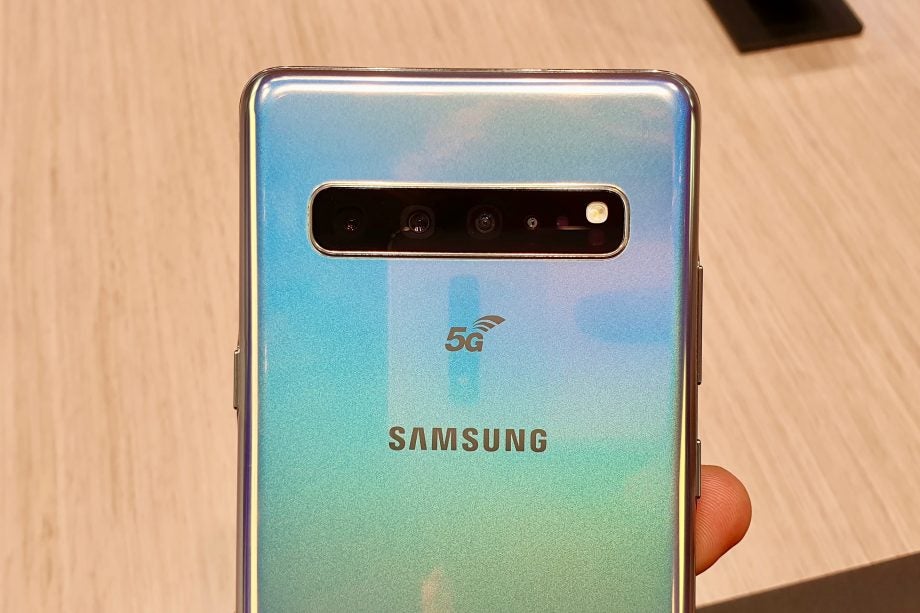5 reasons why you shouldn’t buy a 5G phone − yet

5G has finally gone live in the UK, but tempting as it is, try not to get swallowed up by the hype. Here’s why − unless you’re desperate to be one of the first to try out the newest toys on the market − it really isn’t worth deciding what the best 5G phone is yet, let alone buying one.
1. There isn’t a lot of choice
So far, precious few 5G phones have actually been announced, and several of those that have don’t yet have a price tag or specific release date. These are the 5G phones that are either available or coming to the UK:
- OnePlus 7 Pro 5G
- Samsung Galaxy S10 5G
- Xiaomi Mi Mix 3 5G
- LG V50
- Samsung Galaxy Fold 5G
- Huawei Mate 20 X 5G
- Huawei Mate X
This list, of course, will continue to expand. Right now though, the pool is very shallow indeed.
Read more: 5G: what is it?
2. 5G phones are pricey
5G phones and contracts invariably come at a premium. We wouldn’t recommend buying a 5G phone SIM-free, as in general they’ll tend to cost £100-£200 more than the non-5G version of the phone.
Vodafone and EE have revealed the prices of their 5G plans, which you can check out by following the links below:
- Related: Vodafone 5G phones, prices and plans
- Also read: Which phones will EE be selling on its 5G network
EE’s 5G plans start at £54 per month (that gets you the Oppo Reno 5G with 10GB of monthly data, after a £170 upfront fee). Its priciest 5G plans will set you back £89 per month (after an upfront fee of £10) and get you 120GB of 5G data on either the LG V50 or Samsung Galaxy S10 5G.
Vodafone’s 5G contracts start at £50 per month (for the Xiaomi Mi Mix 3 5G with 5GB of data, after a £99 upfront fee), and go up to £77 per month (for the Samsung Galaxy S10 5G with 100GB of data, after a £49 upfront fee).
3. 5G phones are either really big…
If higher prices and limited choice aren’t enough to put you off purchasing a 5G phone right now, the design and performance sacrifices that phone manufacturers are having to make right now might. Especially if you’re not a fan of huge smartphones.
The majority of early 5G phones will be big and hefty. That’s because right now, 5G phones have to rely on a standalone modem rather than having it built into the main chipset. The modem requires extra space, and the majority of smartphone manufacturers have decided to make their 5G handsets bigger, in order to squeeze it in.
No doubt, chip makers like Qualcomm are well on their way to offering up chipsets with integrated 5G modems but right now, you’ll have to settle for hefty handsets like the 7.2-inch Mate 20 X 5G, 6.7-inch S10 5G, 6.39-inch Mi Mix 3 5G and 6.4-inch LG V50.
Here’s what Max Parker wrote in our hands-on Samsung Galaxy S10 5G review: “After finally finding one on the show floor during MWC I can say that this extra heft is noticeable, with the larger proportions also making the handset harder to hold.”
4. …or have small batteries
And those that haven’t gone down the supersizing route are having to sacrifice battery life. When it unveiled the 5G version of the OnePlus 7 Pro, OnePlus admitted that it had run into difficulties when it was developing the handset.
OnePlus had to start from scratch after testing the initial version of the phone for durability, and had to create new designs for its 5G antennae and NFC antenna in order to ensure the final product wouldn’t be too chunky. The phone’s cooling area is 50% bigger than the cooling area on the non-5G OnePlus 7 Pro, and this is likely to come at the expense of battery life.
OnePlus recently hinted that you shouldn’t expect amazing stamina from 5G phones in general. “It would be easy to create a workable 5G solution that would be thick and ugly but that wouldn’t be what’s ultimately desired,” OnePlus co-founder Pete Lau said ahead of the OnePlus 7’s unveiling.
“[Consumers] want the battery to last longer. To address this particular need, we could increase the battery size and make the device thicker but from our perspective this isn’t a best plan of action. Our customers want a device that is thin and light, but they also want it to last all day. That’s the ideal device. But 5G brings the challenge of a phone that’s harder to keep at the same size.”
Similarly, in the case of the Mate 20 X 5G, Huawei has had to reduce the size of the battery in order to free up room for the Balong 5000 5G modem.
5. Blanket 5G coverage is still way off
The final, and perhaps most important, reason not to buy a 5G phone yet is this: blanket 5G coverage is way off.
EE sent 5G networks live in six cities (Belfast, Birmingham, Cardiff, London, Manchester, Edinburgh) on May 30, but they don’t cover the entirety of these cities. You can only 5G in very specific areas of these cities − it’s worth thinking of them as 5G hotspots.
The mobile operator has hinted that we might have to wait until 2022 for blanket 5G coverage.
Vodafone, meanwhile, will send its 5G network live on July 3, and it will initially be available in Birmingham, Bristol, Cardiff, Glasgow, Manchester, Liverpool and London. O2 appears to be doing something similar, but with an initial focus on businesses.


